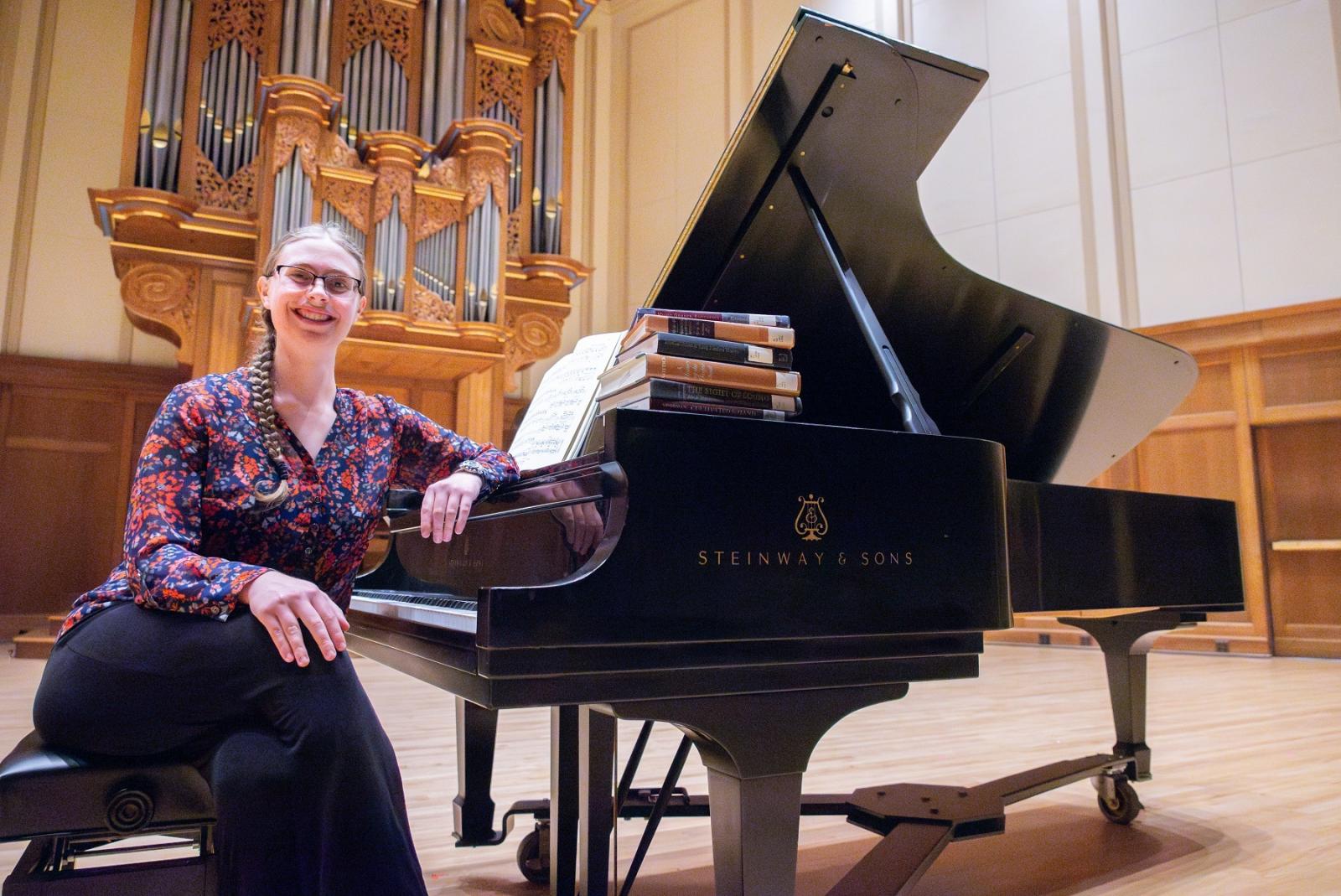It’s almost as if the weather this past Monday, April 28 knew that senior Helen Panshin would open with a tumultuous boom of sound. While it had not begun raining, thunder and lightning began to fester outside before the recital even began. Panshin rightfully titled her recital “Of Darkness and Resilience.” Held in the chapel, Panshin started her recital with “Introduction and Fugue,” by Ann Sheppard Mounsey Batholomew. The piece is loud and immediately demands the attention of all the audience present, but later travels into a calmer tune.

Panshin didn’t greet the audience upon arrival, as she simply stepped onto the stage, diving headfirst in her first piece. Once she was done playing, Panshin explained that she came across this piece through a documentary she watched about the city of London. She laughed as she recounted that she loved “the drama” the piece evoked upon first listen.
Panshin then set some ground rules for her recital, stating that she would love it if the audience would allow themselves to move freely and get as comfortable as they could. Panshin then provided a visual description of herself, naming her clothing and physical features.
The piece that followed was titled “Thème et variations,” by Lili Boulanger. Panshin stated that this piece was “unapologetically dark,” and that proved true with the solemn notes it provided. The piece trickled down from dramatic to emotional. The pitch became higher, and the imposing tone from the beginning faded out.
The third piece was “A Sad Paven for these Distracted Tymes” by Thomas Tomkins. It is at this point as well where Panshin switches from piano to harpsichord. The tone of the piece is best described as “shrill,” not in playing, but in feeling. The piece produced an intense energy, almost as if there was a looming threat present in the air, and there were many times where a crescendo is reached but was later healed and followed by a softer tone afterwards.
Moving back to the piano, Panshin’s fourth piece was “Variations on an Original Theme in D-Flat Major (of an Exceeding Dismal Nature),” by Ethel Smyth. Panshin shared the anecdote that one movement is dedicated to the composer’s horse Phyllis. The piece was the lighter of the many Panshin played. Perhaps that’s due to its incorporation of humor, or the fact that it trailed on delicate at times. However, the piece still emulated the title of Panshin’s recital, as whenever you, the audience, assumed the storm was over, it brought you back in with more lower-octave notes.
It is at this point when the rain began to pick up outside. Lightning could be seen striking outside of the chapel’s stained-glass windows. This is when Panshin began her fifth piece “Toccata for Piano,” by American composer Emma Lou Diemer. Throughout the piece, Panshin demonstrated “extended techniques” — she not only played the piano’s keys but also the strings of the piano, and even gently hit the sides.
Before the final piece, Panshin dedicated time to thank those who have fostered her music career, and then welcomed her collaborator on cello, senior Laurel Thompson. Together, they performed the first movement of Luise Adolpha Le Beau’s “Sonata for Violoncello and Piano.” The piece was emotional and served as a wonderful closing for Panshin’s recital.

